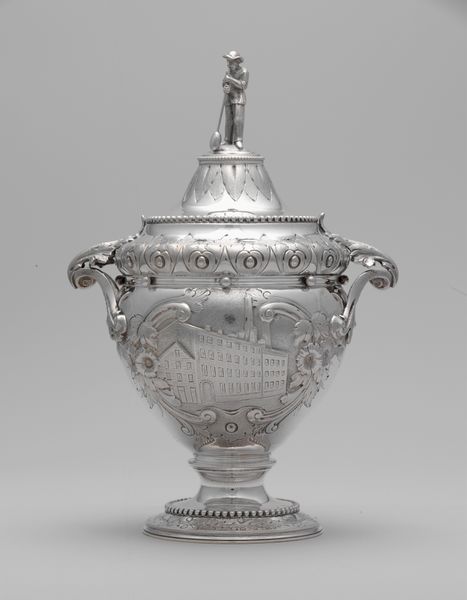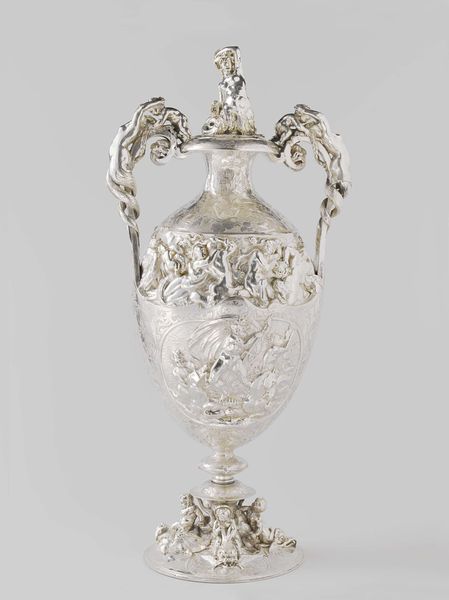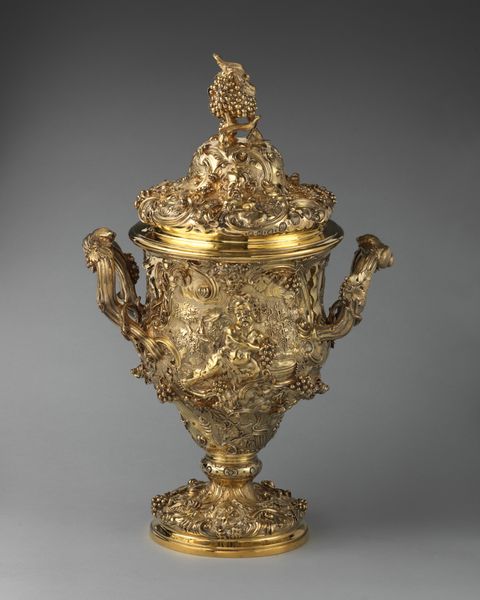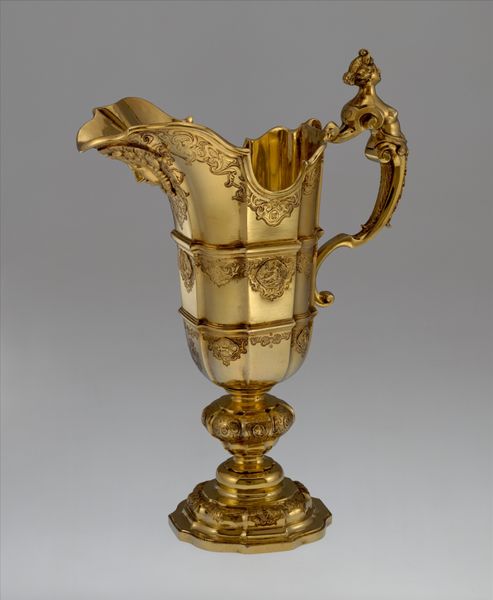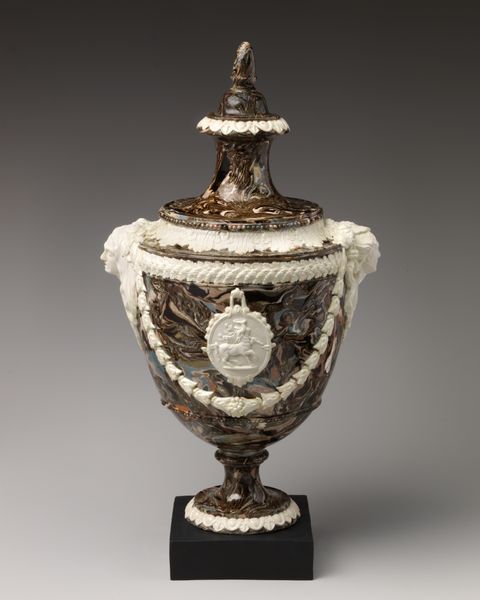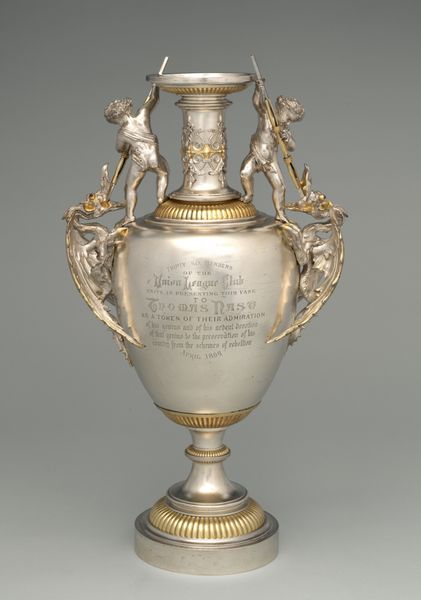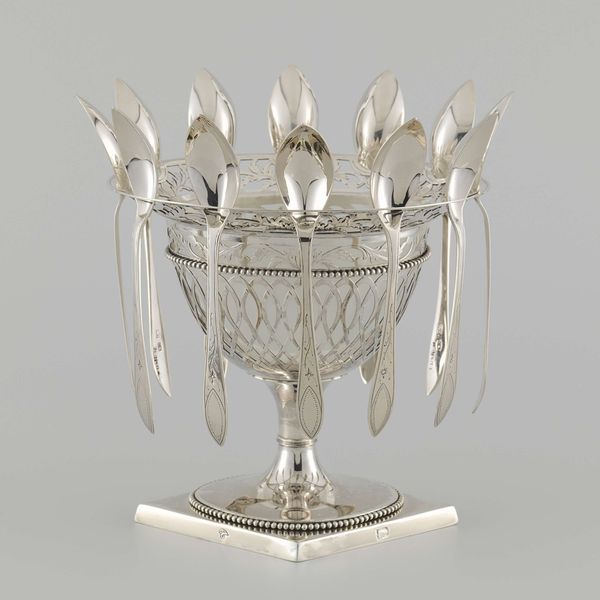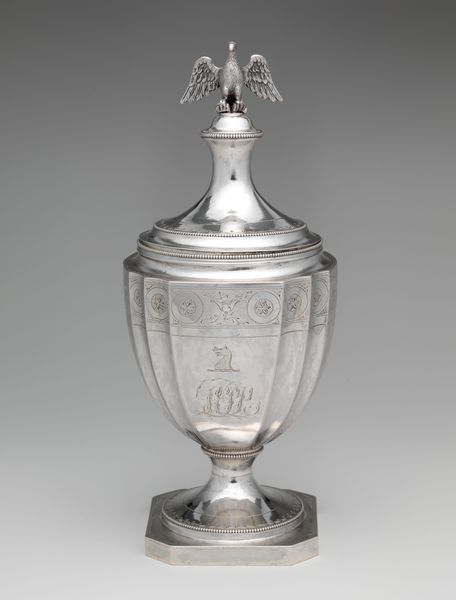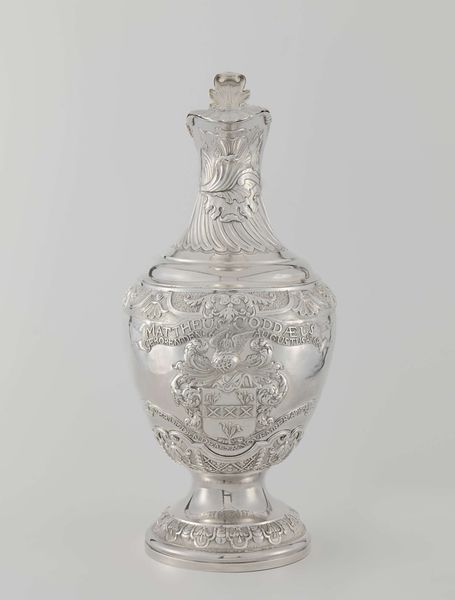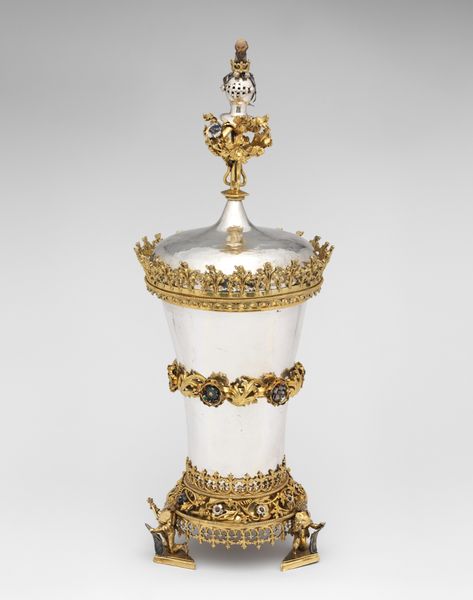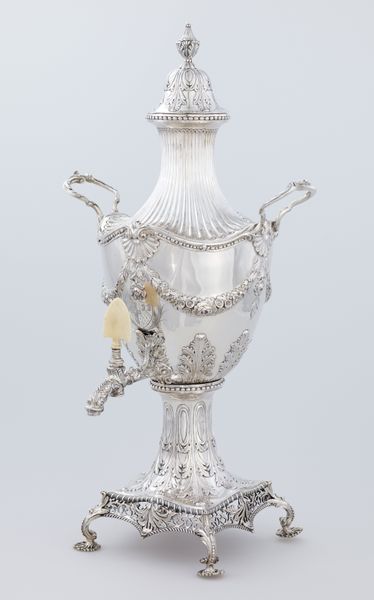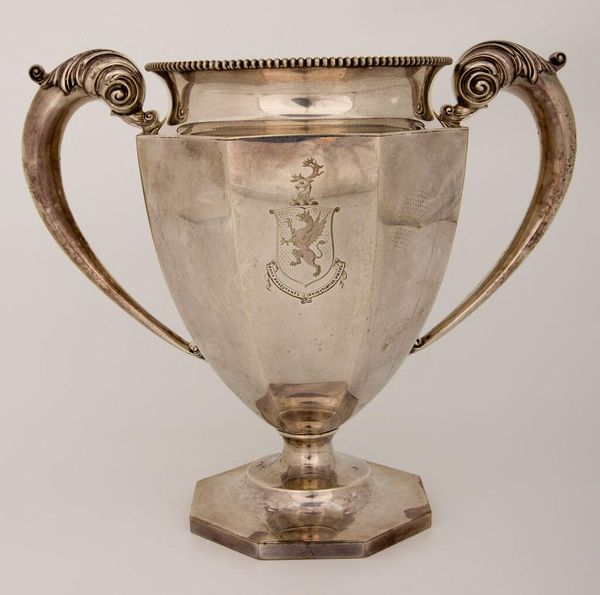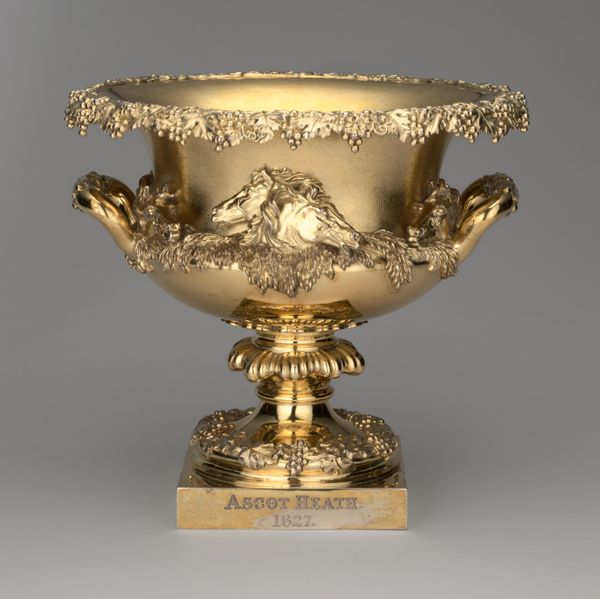
Presentation Candelabrum for Commodore Stephen Decatur 1817
0:00
0:00
silver, metal, sculpture
#
neoclacissism
#
silver
#
metal
#
figuration
#
sculpture
#
decorative-art
Dimensions: height: 50.8 cm (20 in.)
Copyright: National Gallery of Art: CC0 1.0
Curator: Here we have the “Presentation Candelabrum for Commodore Stephen Decatur,” created around 1817 by Andrew Ellicott Warner. It’s primarily silver, crafted in a neoclassical style, and quite imposing in scale. Editor: Imposing is right! It's simultaneously opulent and, dare I say, a bit intimidating. All that gleaming silver and those severe figural elements… it gives off a very formal, almost propagandistic vibe. Curator: Well, it was intended to be a formal presentation piece. Look at how Warner employs neoclassical motifs—garlands, winged figures—everything adheres to a specific design logic emphasizing balance and symmetry. Note the six candle arms, radiating outwards with this incredible ornate decoration. Editor: Exactly. And speaking of the winged figures, their rather… vacant expressions reinforce this sense of detached power. I'm interested in the historical context; Decatur was a celebrated naval hero, but his legacy is complicated by his involvement in the Barbary Wars, and the US's early imperial ambitions. This piece serves as an artifact of nation building through war. Curator: You raise an interesting point about Decatur's complex legacy. However, let's also consider Warner’s craftsmanship. Notice how the silverwork emphasizes volume, but at the same time achieves an airy lightness of effect. The piercing and chasing—observe the fine details of the garlands and the treatment of drapery on the figures. Editor: I see your point about the technical skill involved. But I'm wondering, what kind of statement does this object make about power, particularly in that historical moment? A society trying to distinguish itself but already wrestling with these power structures… the Barbary wars themselves raised important questions about American dominance, slavery, and tribute. How might audiences interpret such a commemorative object during and after these violent historical events? Curator: A valuable insight! Analyzing the presentation of power as an active and reactive visual dialogue is so crucial when dealing with Neoclassical pieces of presentation. Thinking beyond a value judgement or analysis of form, the audience can see this object within a larger system. Editor: Right, it’s these embedded dialogues that illuminate its cultural and historical relevance, no matter the specific era of examination.
Comments
No comments
Be the first to comment and join the conversation on the ultimate creative platform.
